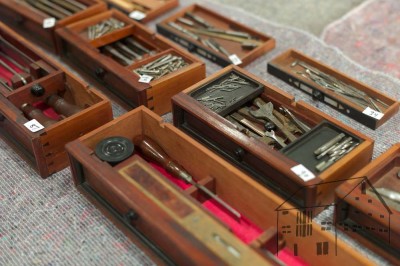
For a moment, think about that ten-page term paper you had to write in high school, agonizingly struggling to finish the assigned task. Now multiply that ten-page paper by a factor of eighty-two, combined with transforming that much of some old French guy’s arcane verbiage into comprehensible English and you know what it is like to spend days on end working with Roubo. It is not agonizing — to the great contrary – but it is grueling.
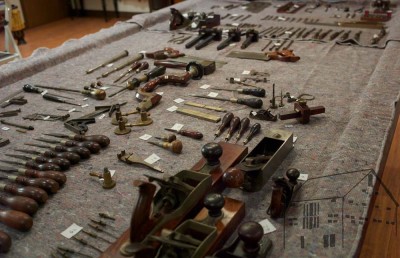
Combine that with a bitterly cold winter (for these parts) and the ongoing chore of relocating after three decades in the same house without ever systematically winnowing the papers residing in multiple file cabinets and dozens of bookcases, and you get some idea why I rewarded myself this afternoon with a delightful diversion — formatting and massaging the manuscript for Virtuoso: the Tool Cabinet and Workbench of Henry O. Studley. No less arduous than Roubo, but certainly a welcomed change of pace.
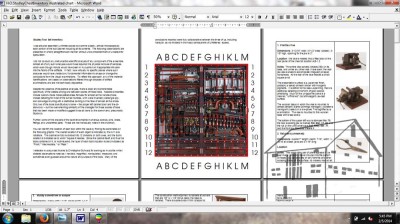
For the sheer fun of it, I spent several hours creating the tool inventory for the cabinet, merging the notes I dictated to Chris during my examination of all the tools individually during our research and photographic forays with Narayan’s exquisite photographs. Sometimes I just stopped to stare a the screen, to relive the moments past. It was and is unbelievably cool.
Several months ago when Chris Schwarz blogged about the closing of Midwest Woodworking , a local institution for more than a century, I immediately contacted him about the possibility of obtaining a slab of mahogany so that I could build the Studley-style workbench that I am pretty much morally obliged to make, especially given my acquisition over the summer of a workbench with a pair of wheel-vises (more about that in the coming days).
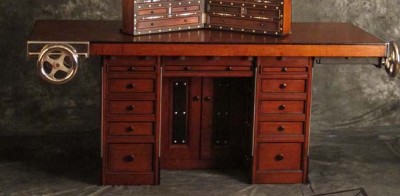
Much to my delight he was able to obtain such a slab o’ wood, albeit in a 14+-foot length that we have split with each one getting a 7+-foot long by 4″ x almost 24″ wide hunk of lumber. Of course, since the time of placing my order those many months ago I have learned through careful examination that Studley did not build his bench from a slab, but rather through stacked laminations with exquisite Cuban mahogany faces.
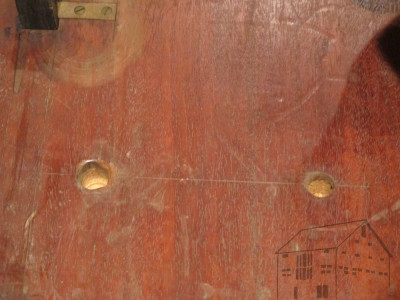
Since I am metaphysically obliged to follow his footsteps, I now have a massive hunk of wood without a defined destination.
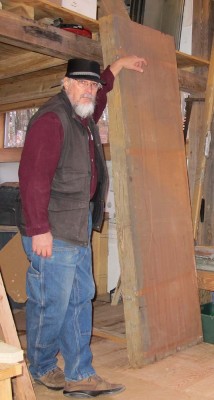
So, I have this massive slab, and some vintage 6″x6″ black walnut, I’ve been thinking about another Roubo bench, using sipo (the mahogany analog) for the top,and black walnut for the legs and stretchers, with an ebonized crozet and planing stop, and a couple of Peter Ross holdfasts. It would be the only one like it in the neighborhood…

At the conclusion of our recent foray/return to photograph and study the tool cabinet and workbench of Henry O. Studley for the upcoming book VIRTUOSO, I insisted we commemorate the moment with this photo since it was likely the last such trip we take all together. Narayan set up his camera and captured this image, literally moments before we departed for the final time. For any “make up” images I need for the manuscript, it will probably be just two of us for a quick trip.
It was my fifth visit to the ensemble, Narayan’s fourth, and Chris’ third. They have been wonderful times of camaraderie and collaboration, a fair bit of off-the-wall humor and wide ranging discussions, all resulting in thousands of spectacular images and innumerable observations that will be interwoven with copious research to create a compelling book about this iconic collection and the historical figure who created it. Now comes the hard and fairly solitary part of the project — actually getting a manuscript on to Chris’ desk in the next thirteen months.
We have some truly grand ideas regarding the project that will be announced when and if they come to fruition.
Stay tuned.
My pal MikeM is fond of saying that the whole point of enduring our adult jobs is to get to the point where we are free and able to engage in interesting projects with great people in fun places. Such is the case with VIRTUOSO, my in-process book about the tool cabinet and work bench of Henry O. Studley.
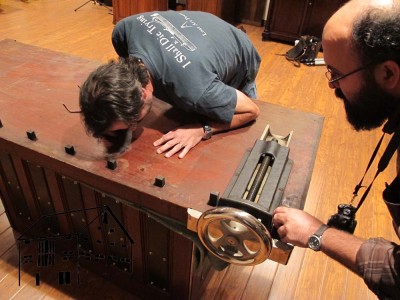
Collaborating with photographer Narayan Nayar and editor/publisher Chris Schwarz is an ongoing delight. The project patron and owner of the Studley ensemble is a man of astonishing accomplishments and insights whose company I relish. Our work setting within his menagerie is about the most wonderful work environment I have ever experienced as an aesthete and artifactualist. This definietly fits the description of what MikeM describes as the point of work.
Immediately after wrapping up WIA in Cincinnati we loaded up the car and headed to North Tulsapolis, Montaska for my fifth visit to the collection for our final scheduled session of photography. What made this trip extra special was that on this time we would be joined by vise maven Jameel Abraham to provide me another set of expert and experienced eyes in my final examination of the vises on Studley’s bench before I ramp up weaving all the research into a compelling book.
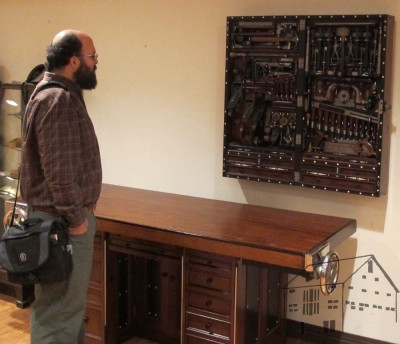
As is usually the case, Jameel’s reaction to the ensemble was stasis. He stared for several minutes before I cajoled him into the work at hand.
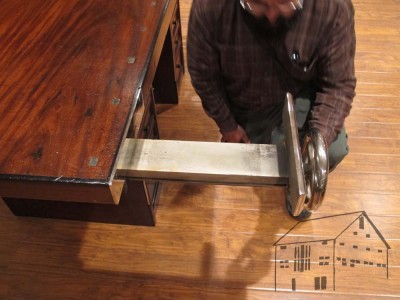
Like me and all who have witnessed this before him, Jameel was much impressed by a face vise that opened 16″ with zero wiggle. I mean zero.
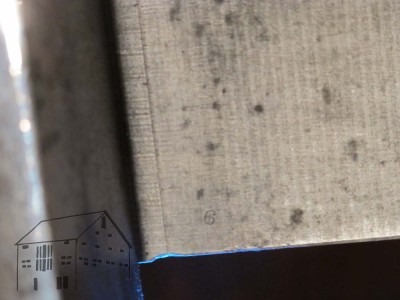
The information in just this image is worth many thousand words of description.
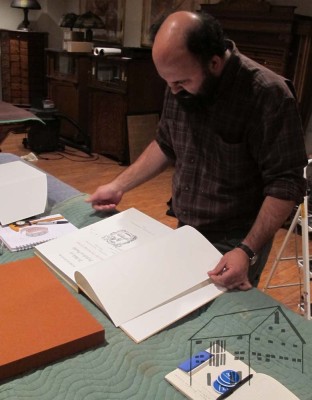
Finally, after some pathetic nagging from me, he opened his copy of the Deluxe Edition. His silent smile was gratifying.
Yup, interesting projects, great people, fun places.
The second and third days of the whirlwind tour were a testament to the diminutive size of New England. Having driven to and from south Texas a month before (35 hours of driving each way), it was a bit of a shock to get from one place to another in an hour or two.

I began this leg by going from southern Rhode Island to the northern end of Cape Cod, a drive I guessed would take four hours. I forget that the maps in the highway atlas are not all the same scale. An hour and a half after shoving off I pulled into the driveway of PhilipH, whose elegant new workshop houses a fairly traditional furniture-maker’s bench with a piano-maker’s face vise in the typical left side position.
Again, Philip’s vise was of the similar form and function – integrated casting, sliding drawer platen, 9-1/4” wheel, ~16″ opening distance — yet retained some unique features. The enigma of these vises grows the more I learn. There were a couple of numerical markings on the vise, but nothing else to provide clues as to who/where/when it was manufactured.
A couple of hours and about three dozen photographs later we wrapped up our work for the day, and following a delightful hike through a nature preserve we returned for dinner.
The next morning I left with the intent of a short visit with Peter Follansbee at Plimouth Plantation. I spent an enjoyable hour with Peter, and the subject of the Lie-Nielson tool confab that day at the Connecticut Valley School of Woodworking came up. Being from non-New England I assumed it would be too far to get there. Peter assured me that my path would take me within an hour of CVSW, so off I went. I’m really glad I did.
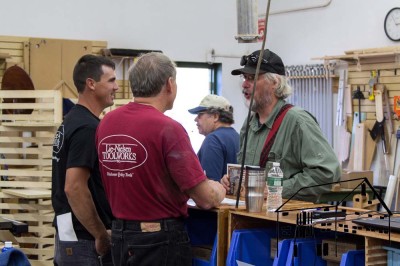
At the tool event I had a chance to chat with Matt Bickford, and an enriching almost-hour of chatting with tool-history-researcher extraordinaire Jeff Burks (who took this picture of me with the Lie-Nielson folks), a frequent contributor to Chris Schwarz’ blog. Jeff has a keen interest in the development of the woodworking vise, and is turning his razor-sharp eyes and mind to the peculiarities of the piano makers’ vise. I can hardly wait to see what he will turn up.
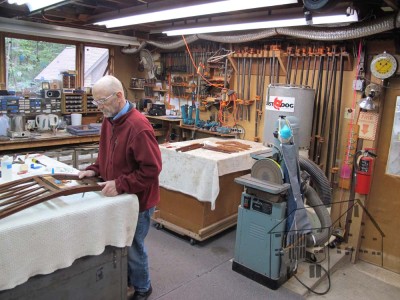
Departing CVSW I made it back to the I-495 loop around Boston for the evening rush hour, but still made it to long time friend BruceH’s house north of the city in time for dinner and delightful fellowship with Bruce and his lovely wife Renee. Bruce is a superb furniture restorer from whom I have learned much over the two decades of our friendship. His elegant, compact shop is under the house, and he has made his living there for almost three decades.
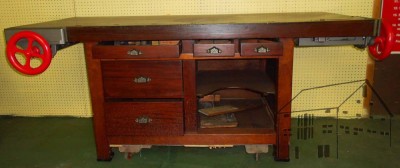
The first stop on my grand tour of New England was in southern Rhode Island, where AlanJ was patiently restoring a recently acquired piano-maker’s bench with two similar vises, one configured for the face position on the bench, the other for use as an end vise. I first became aware of this bench many months ago when a friend notified me of its presence on Ebay (this photo of the bench with red-handled vises was from the original listing). Jameel Abraham and I discussed at length the possibility of purchasing this bench, but in the end we dithered long enough for Alan to purchase it before we could make up our minds.
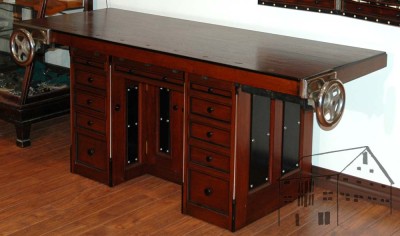
Alan’s new (to him) bench has an iron clad provenance, purchased from the descendents of a known piano maker and a documented home base of the Emerson Piano Company of Boston, along with some notable similarities to Henry Studley’s workbench (pictured here).
He has even begun to compile historical research about the piano maker, which warms my heart. After my tracking him down, Alan has been nothing but generous with images and background information. With his invitation in hand I headed north from The Peoples’ Republic of Maryland with Rhode Island as the home to the first of a half dozen vises I would study on this trip.

The bench itself was so similar to Henry Studley’s workbench that it is nearly inconceivable to me that the makers of these two benches were not working from the same playbook. The top of Alan’s bench is a surface of two magnificent planks of Cuban Mahogany — hard, dense, and beautifully figured. These 5/4 planks are laminated onto a 3” core of white oak. Altogether they weigh about three hundred pounds. Add the two 80-pound vises and you are up to almost 450 pounds. Studley’s bench is made of solid Cuban mahogany, but glued up from five slabs. The edges and corners of this bench are an ebonized oak strips about ½” square, while Studley used actual ebony.
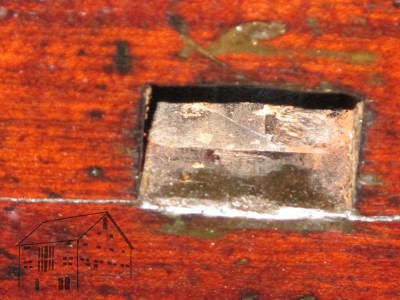
The dog holes on Alan’s bench are actually mortises chopped directly through the entire slab, while Studley’s are blocks in a glued construction method.
The vises of this bench were of the correct form and general configuration; a unified casting of the face jaw and the sliding platform “way,” a generous 9-1/4” wheel handle driving a twin-lead 1-1/8’ x 3 tpi Acme screw for fast, smooth action with a robust clamping when engaged. The face vise opens about 16”, which is emerging as a standard dimension for these vises.
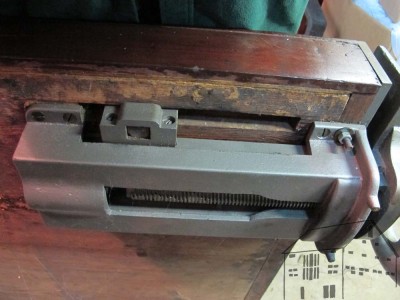
The tail vise has a collar affixed to the sliding “drawer” which allows for a dog to project up through the top.
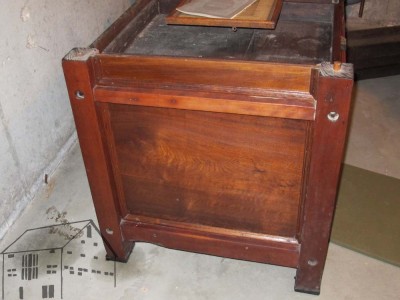
The base is similar in concept to the base that came on a bench I bought last summer in that it is clearly a “knock-down” cabinet that was ordered from a commercial vendor (note the four connecting bolt), and the top was made to fit this base. Studley’s base was long lost, and the current owner of the Studley bench fabricated a new one based on the shadows on the underside of the bench top and the aesthetic details of the tool cabinet.
All in all a magnificent start to the trip, and I look forward to Alan’s reports of his ongoing restoration of the bench and vises, which now have a pewter-ish appearance. I hope to get back to re-visit the restored bench next fall.
Thanks Alan!
I would not say that I have a vise, um, fetish. I will admit that I have long been fascinated with vises, and own what some folks – for example a bride of 32 years, just thinking hypothetically here — would think is an over-adequate inventory of them. The seeds of her view might have been planted when we were first married and students at the University of Delaware, and I learned about Carpenter Machinery in downtown Philly having a huge stock of Emmert vises salvaged from the recently-closed pattern shop of the Philadelphia Navy Yard foundry. We were poor as church mice, but for one of only two times while in college I took money out of savings and headed to Carpenter’s. I still remember the look on her face when I climbed into a four-foot-cube industrial storage cage and came out with two almost-100-lb chunks of iron to put into the car trunk.
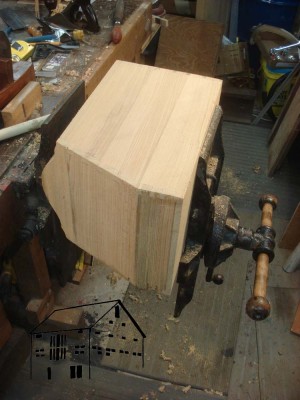
They were complete Emmert K-1s. I built a bench around one, a bench I use daily ever since. The second one remains in the bullpen, awaiting its call to duty some time this coming winter.
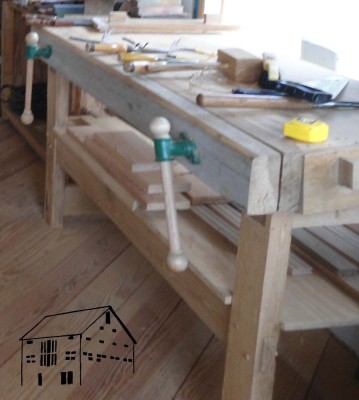
In the years since I obtained and even built a number of vises, some based on specific project needs, some on testing out a “what if” idea, some simply whimsical. Machinist vises. Machinist vises with integral anvils. Twin screw face vises (on the back side of my Emmert-bearing workbench, and pretty much a standard feature on many of the workbenches I have built since).
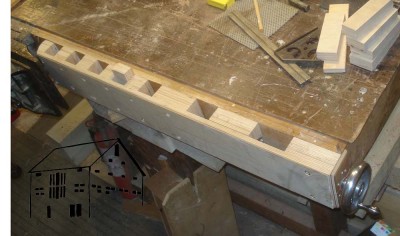
Shop-built end vises (to be featured in a Popular Woodworking article next spring).
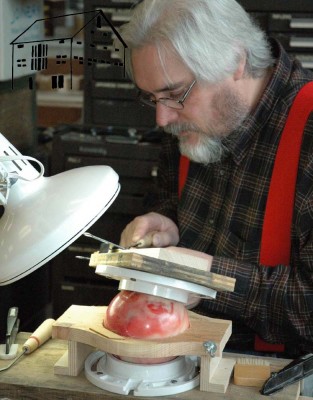
Rotating/tilting engraving tables/vises built with a duckpin bowling ball and two toilet flanges. Zyliss vises, of which I have four and find indispensable. Roubo leg vises. Saw sharpening vises.
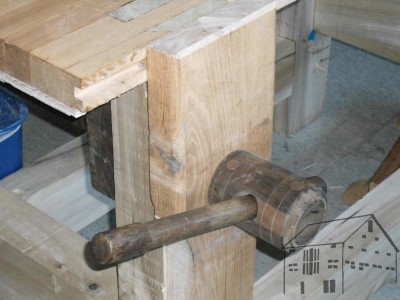
The tale goes on.
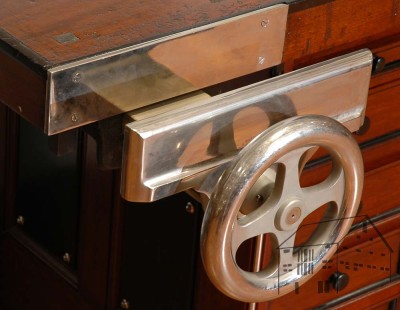
Then three years ago, within days of each other, I had “in the flesh” introductions to both the H.O. Studley workbench with its nickel-plated piano-makers vises and the products of bench vise innovators Jameel and Father John Abraham. In the aftermath of those episodes what had been an abiding curiosity became something much more energized and focused.
Over the next year or so I will be combining the best features of all the piano-makers’ wheel-handle vises I have been able to examine thus far into a design and set of foundry patterns for making the ultimate vise of the form. Along the way I will let you peek over my shoulder as I travel down this path, hopefully one of fulfillment and not of merely enabling a compulsive addiction. In the end my goal is to have yet another new bench, this one an offspring from the splicng of toolism genes from Andre-Jacob Roubo and Henry O. Studley.
Now that will be something to see.
I hope there are no recessive gene issues…
Chris Schwarz just posted my newest contribution to the Lost Art Press Blog. You can see it here. My ongoing exploration of these vises and my efforts to replicate them will mostly occur ay my blog, so stay tuned.




























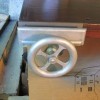
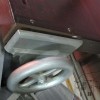









Recent Comments